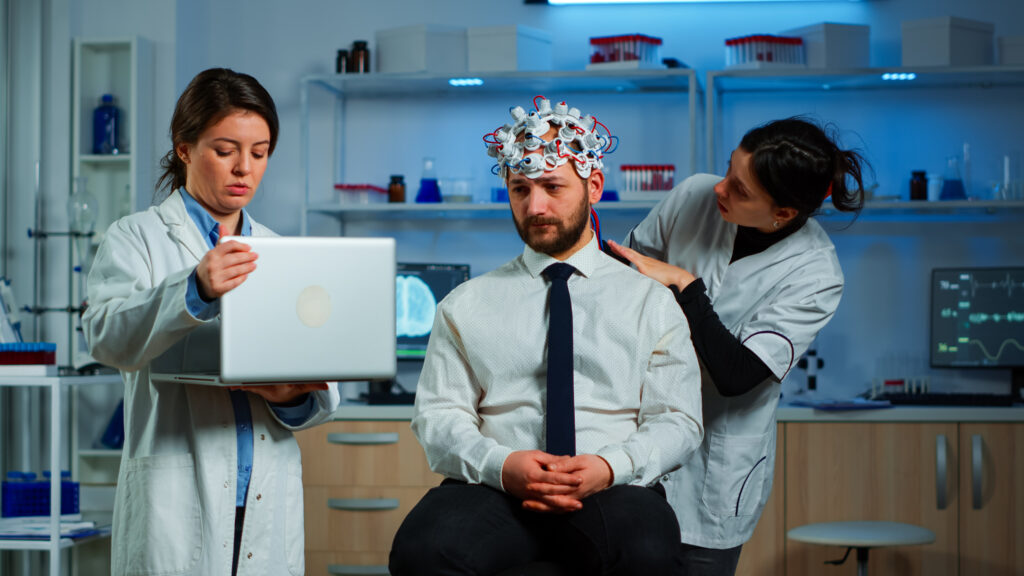Here we are going to share information on the topic “9 cognitive-behavioral therapy (CBT) Techniques for Better Mental Health.” A wide range of methods are employed in cognitive-behavioral therapy (CBT). Based on the relationships and reciprocal influences between your thoughts, emotions, and behavior’s, it’s a successful form of brief therapy.
One popular type of talk therapy is called cognitive-behavioral therapy, or CBT. CBT is usually meant to be a short-term treatment, requiring anything from a few weeks to a few months to produce results, in contrast to certain other therapies.
While the past is undoubtedly important, cognitive-behavioral therapy (CBT) focuses on giving you the skills you need to address your present issues. And with this kind of therapy, there are numerous ways to get there.
Here are several CBT strategies, the kinds of difficulties they treat, and what to anticipate from CBT.

9 cognitive-behavioral therapy (CBT) Techniques for Better Mental Health
Which methods are applied in CBT?
- The core idea of cognitive-behavioral therapy (CBT) is that your mental processes influence your feelings, which can then influence your actions.
- For example, CBT emphasizes how unfavorable ideas can result in unfavorable emotions and behaviors. Rephrasing your thoughts to be more constructive, however, might result in happier emotions and more constructive actions.
- You will learn from your therapist how to make immediate adjustments. You can employ these abilities for the remainder of your life.
CBT can be approached in a variety of ways, depending on your goals and the issue you’re trying to solve. Whichever strategy your therapist uses, it will include:
- Naming certain concerns or challenges that you face on a daily basis
- Recognizing the negative effects of your thought habits and how to change them
- Recognizing negative thoughts and modifying them to alter your feelings
- Gaining knowledge about and practicing new behaviors
Your therapist will determine the most effective CBT techniques to employ after talking with you and finding out more about the problem you’re trying to solve.
9 cognitive-behavioral therapy (CBT) Techniques for Better Mental Health
The following nine procedures are among the most regularly employed techniques in cognitive behavioral therapy (CBT):
1. Reframing or cognitive restructuring
- This entails examining negative thought patterns closely.
- Maybe you’re one of those people who tends to overgeneralize, assume the worst, or give too much weight to little things. This kind of thinking can influence your actions and possibly turn into a self-fulfilling prophecy.
- In order to help you recognize harmful habits, your therapist will inquire about your mental processes under certain circumstances. You can learn how to rephrase those ideas to be more constructive and upbeat once you’re aware of them.
- For instance, “I blew the report because I’m absolutely useless” can be changed to “That report wasn’t my best work, but I contribute in many ways as a great employee.”
2. Directed exploration
- During guided discovery, the therapist will become familiar with your perspective. They will then pose queries meant to make you reevaluate your assumptions and widen your perspective.
- It’s possible that you’ll be asked to provide both evidence that confirms and contradicts your assumptions.
- You’ll get the ability to view things from a variety of angles during the process, particularly ones you might not have before. This will enable you to select a more beneficial course.
3. The use of exposure therapy
- Fears and phobias can be faced through exposure treatment. Your therapist will gradually introduce you to the things that make you feel afraid or anxious while offering you advice on how to handle them at the time.
- Small steps can be taken in this direction. Exposure eventually has the power to reduce feelings of vulnerability and increase self-assurance in your coping skills.
4. Keeping a notebook and keeping thought logs
- Writing is a tried-and-true method of connecting with your own ideas.
- In between sessions, your therapist can urge you to write down any negative thoughts that came to mind, along with any alternative positive ideas you’d want to consider.
- Recording the new ideas and actions you’ve adopted since the prior session is an additional writing task. Putting it down on paper can assist you in recognizing your progress.
5. Scheduling activities and triggering behaviors
- Putting an activity on your calendar can help if it’s something you frequently avoid or put off because of fear or worry. After the decision-making load is removed, you could be more inclined to carry it out.
- Organizing your activities can help you form positive habits and provide you with plenty of chances to implement what you’ve learned.
6. Experiments on behavior
- Behavioral experiments are commonly employed in the treatment of anxiety disorders characterized by catastrophic thinking.
- You are going to be asked to make predictions about a task that usually causes you anxiety before you even begin. You will discuss whether or not the prediction came true later.
- You may eventually come to the conclusion that the apocalyptic event is not likely to occur. You’ll probably begin with less stressful activities and work your way up from there.
7. Methods for reducing stress and relaxing
- You might learn certain progressive relaxation techniques in CBT, like:
- Muscle-relaxing techniques with deep breathing imagery
- You’ll pick up useful skills that will help you feel more in control and less stressed. Dealing with phobias, social anxiety, and other pressures can benefit from this.
8. Acting out
You can practice various behaviors in potentially challenging situations by role-playing. Imagining potential outcomes can help reduce worry and be utilized for:
- Enhancing one’s ability to solve problems
- Obtaining comfort and self-assurance under specific circumstances
- Putting social skills into practice
- Training in assertiveness enhances communication abilities
9. Approximation in succession
- This entails taking large projects and dividing them into smaller, more manageable pieces. Step by step, you build confidence as you proceed by building upon the prior steps.
What transpires during a session of CBT?
You will assist the therapist in understanding the issue you are facing and your goals for CBT during your first session. After that, the therapist will create a strategy to reach a particular objective.
Objectives ought to be:
- Specific
- Measurable
- Achievable
- Realistic
- Time-limited
The therapist may suggest solo, family, or group treatment based on your circumstances and your SMART goals.
Sessions usually take place once a week for an hour, though this might change based on the needs and availability of each client.
You will be required to complete worksheets, keep a journal, or do specific chores in between sessions, as homework is an integral part of the process.
It’s important to feel at ease and communicate openly with your therapist. Choose a different therapist if you don’t feel totally at ease with your current one. You should be able to open up and connect with them more readily.
Seek out a therapist who has received CBT training and has dealt with issues similar to yours. Verify that they have the appropriate licenses and certifications.
For recommendations, you might choose to consult your physician or other medical professionals. Practitioners could consist of:
- psychiatrists
- psychologists
- psychiatric nurses who practice
Social workers, family and marriage therapists, and other medical practitioners with training in mental health
It usually takes several weeks to several months for CBT to start showing improvements.
What issues can CBT resolve?
CBT can assist with a wide range of common issues, including as managing anxiety related to a particular issue or learning how to handle stressful situations.
For CBT to be beneficial, you do not require a medical diagnosis.
It can also be beneficial for:
- Gaining control over strong feelings like fear, grief, or rage
- Coping with loss, controlling symptoms, or avoiding relapses in mental illness
- Handling issues related to physical health
- Resolving disputes and enhancing communication abilities
- Training in assertiveness
A wide range of problems can benefit from CBT, either on its own or in conjunction with other therapies or drugs. This comprises:
- Addictions and anxiety conditions
- Bipolar illnesses
- Persistent ache
- Depression
- Eating disorders
- Compulsive-obsessive disorder (OCD)
- Fears secondary to traumatic stress disorder (PTSD)
- Schizophrenia
- Sexual dysfunctions
- Problems of sleep
- Tinnitus
Exist any dangers?
Though there are a few factors to consider, CBT is not generally seen as a dangerous therapy.
Although it varies greatly from person to person, some people may initially find facing their issues upsetting or uncomfortable.
While you’re overcoming it, some forms of cognitive-behavioral therapy, such as exposure therapy, can make you feel more stressed and anxious.
It takes time to start working. It requires dedication and a readiness to practice new skills outside of therapy sessions as well. It helps to consider cognitive behavioral therapy (CBT) as a lifestyle modification that you plan to maintain and advance throughout your life.
Frequently Asked Questions
(9 cognitive-behavioral therapy (CBT) Techniques for Better Mental Health)
Which five steps make up CBT?
Answer: 5 Simple Steps to Use Cognitive Behavioral Therapy to Change the Way You Think (CBT)
- Step 1: Create a list.
- Step 2: Write down any fruitless thoughts.
- Step 3: Construct substitute ideas.
- Step 4: Go through your list frequently.
- Step 5: Take note and change.
What is the method of CBT therapy?
Answer: The goal of CBT is to teach people how to become their own therapists. Patients and clients are assisted in developing coping skills through exercises conducted during sessions and exercises completed outside of them. These skills enable them to modify their own negative emotions, thoughts, and behaviors.
Which CBT exercises are there?
Answer: CBT Methods: 25 Worksheets for Cognitive Behavioral Therapy
Some of the most widely used and successful CBT methods are the nine methods and resources listed below.
- Journaling, deconstructing cognitive fallacies,.
- Restructuring cognition.
- Preventing exposure and reaction.
- Interoceptive awareness.
- Exposure to and rewriting of nightmares.
- Play the script through to the very end.
- progressive relaxation of the muscles.
Which CBT methods are essential?
Answer: The three primary techniques of cognitive behavioral therapy are problem-focused, active, and collaborative. Using a technique known as cognitive restructuring, medical professionals assist patients in recognizing, assessing, and changing false or otherwise counterproductive thought patterns linked to emotional discomfort.
Which three pillars make up CBT?
Answer: The aim of cognitive behavioral therapy, or CBT, is to assist the patient in realizing how their beliefs influence their actions. The sessions are organized by the three CBT pillars. These three pillars are management, identification, and recognition.
Which three Cs make up CBT?
Answer: Seize it, Examine it, and adjust it
Some clients might be acquainted with the “3 C’s,” which is an official procedure for performing the two aforementioned methods (catch it, check it, change it). If so, assist them in applying the three Cs to thoughts that stigmatize themselves.
Is CBT a method used in counselling?
Answer: Talk therapy that is systematic and goal-oriented is called cognitive behavioral therapy (CBT). It can support the management of emotional issues like coping with stress or sorrow as well as mental health illnesses like anxiety and depression.

Conclusion
(9 cognitive-behavioral therapy (CBT) Techniques for Better Mental Health)
To sum up, learning about nine different cognitive behavioral therapy (CBT) strategies will help improve mental health. Through the integration of several techniques, like behavioral activation, cognitive restructuring, and mindfulness, people can develop efficient coping methods and strengthen their ability to bounce back from setbacks. These methods enable people to recognize and confront harmful thought patterns, alter their actions, and adopt more positive viewpoints, all of which contribute to increased emotional health and a more harmonious way of living. Adopting CBT methods gives people useful skills to help them negotiate the intricacies of the mind and support long-term mental health.
So, this is how the topic “9 cognitive-behavioral therapy (CBT) Techniques for Better Mental Health” has been addressed.
For more information related to these topics,
You may also visit our Instagram page by
Thank you!

